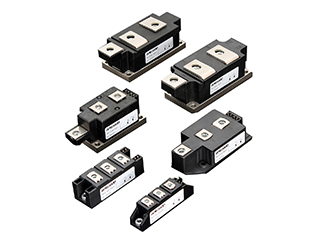What is the main differences between Type 1 and Type 2 SPD?
Type 1 and Type 2 Surge Protective Devices (SPDs) are two different categories of surge protectors used for various levels of protection against power surges. The main difference between these types lies in their specific applications and their placement within the electrical system.
Type 1 SPD (also known as Type 1 Surge Arrester)
Type 1 SPDs are designed to protect against the most severe and direct lightning strikes. They are typically installed at the service entrance of a building, before the main electrical distribution panel. Their primary purpose is to divert and absorb large amounts of lightning current directly from lightning strikes, thereby preventing it from entering the building's electrical system. These SPDs have high discharge capacity and are capable of handling extremely high surge currents generated by lightning events.
Type 2 SPD (also known as Type 2 Surge Protector)
Type 2 SPDs are more commonly used to protect sensitive electrical and electronic equipment within the building from surges that may originate from within the electrical distribution network or nearby sources. They are installed after the main electrical distribution panel and are designed to handle lower surge currents than Type 1 SPDs. These devices provide protection against power surges caused by switching operations, power grid fluctuations, and indirect lightning strikes.
In summary, the main differences between Type 1 and Type 2 SPDs are:
Application: Type 1 SPDs are used to protect the entire building from direct lightning strikes and are installed at the service entrance. Type 2 SPDs are installed after the main distribution panel to protect individual devices and equipment from surges within the electrical system.
Protection Level: Type 1 SPDs offer a higher level of protection, capable of handling extremely high surge currents generated by direct lightning strikes. Type 2 SPDs are designed for lower surge currents, typically generated by internal electrical events or nearby indirect lightning strikes.
Installation Location: Type 1 SPDs are placed at the service entrance, while Type 2 SPDs are installed at the distribution panel or sub-distribution panels within the building.
It's worth noting that a comprehensive surge protection strategy may involve using both Type 1 and Type 2 SPDs in combination, along with other protective measures, to ensure maximum protection for electrical systems and connected devices. The selection of the appropriate surge protection devices depends on the specific requirements and risks associated with the electrical system's location and the level of exposure to potential surge events.

Applications and Customization Services of DC Solid State Relays
Greegoo can offer a variety type of DC solid state relays , such as low voltage drop, fast switching, high frequency, high voltage, wide range of control voltage, built-in freewheeling diode, over-current protection, potentiometer, 4-20mA, 0-10V or 0-5V control DC relay, automotive SSR, AC converter to DC SSR, DC motor reversing SSR, multi-output DC SSR, and normally closed DC SSR, etc.
Read More
Dual Thyristor Module vs Dual Diode Module vs Thyristor Diode Module, what's their difference?
Difference between dual thyristor module, dual diode module and thyristor diode combined module
Read More
How to Choose the Right Medium Voltage Current Transformer: MV Bushing CT vs MV CT
MV Bushing CT vs MV CT: Comparison of Installation, Design, and Application Scenarios
Read More
The Critical Role and Application Analysis of Freewheeling Diodes in Solid-State Relay
The freewheeling diode plays a critical protective role in solid-state relays, especially when controlling inductive loads. It effectively suppresses back electromotive force, protects the power components of the solid-state relay, reduces electromagnetic interference, and enhances the stability and reliability of the circuit.
Read More













